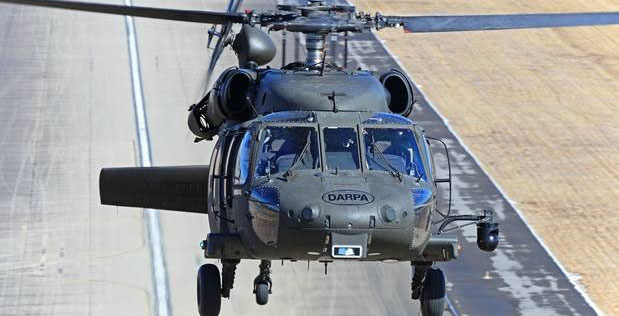
DARPA recently completed a 30-minute pilotless flight of a UH-60A Black Hawk helicopter. The helicopter was retrofitted with the core technology of the Aircrew Labor In-Cockpit Automation System (ALIAS) program to enable it to fly autonomously. This recent flight demonstration is part of a sequential progression in testing and proved the ability for an automation system to be added to aircraft that are currently in service.
The technology – called Sikorsky Matrix – was developed by Sikorsky, a Lockheed Martin company. It gives operators the ability to fly their large rotorcraft reliably as autonomous or optionally piloted aircraft. The system allows for zero, one, or two pilots to operate an aircraft and can help aviators execute their missions by providing assistance to them in challenging conditions – such as limited visibility or the absence of communication.
“With reduced workloads pilots can focus on mission management instead of the mechanics. This unique combination of autonomy software and hardware will make flying both smarter and safer,” stated Stuart Young, program manager in DARPA’s Tactical Technology Office.
The automation of flight will eventually allow an entire mission – from take-off to landing – to be completed autonomously and the system can even take over during emergency situations, such as aircraft failure. DARPA expects that the ALIAS system will offer more operational flexibility to the U.S. Army.
“This includes the ability to operate aircraft at all times of the day or night, with and without pilots, and in a variety of difficult conditions, such as contested, congested, and degraded visual environments,” Young added.
